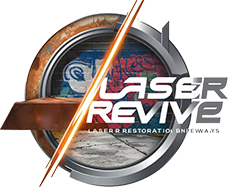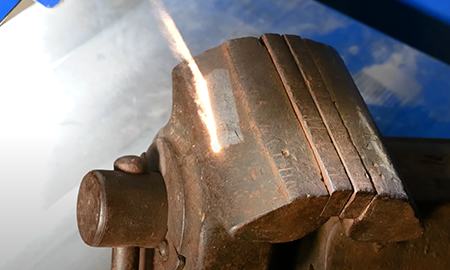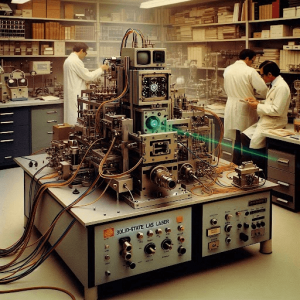Over the past 20 years, lasers have evolved from a sci-fi fantasy into a transformative force across numerous industries. From medical applications to manufacturing, and even in the field of restoration and cleaning, lasers have proven their versatility and power. Join us as we explore the fascinating advancements in laser technology, highlighting the key breakthroughs and their impact on our everyday lives.
The Early 2000s: Laying the Groundwork
At the turn of the millennium, laser technology was already making waves. The development of solid-state lasers and advancements in fiber optics set the stage for a new era of precision and efficiency. Early applications focused primarily on telecommunications and basic industrial processes. However, the potential for lasers in more intricate and varied applications was becoming increasingly apparent.
Mid-2000s: Enter the Fiber Laser
The mid-2000s saw the rise of fiber lasers, which revolutionized many industries with their superior beam quality, energy efficiency, and reliability. Unlike their predecessors, fiber lasers offered unparalleled precision, making them ideal for applications requiring intricate detail and accuracy.
Manufacturing industries quickly adopted fiber lasers for cutting and welding, leading to significant improvements in production speed and product quality. Medical fields also began utilizing these lasers for surgeries, benefiting from their precision and minimally invasive nature.
The 2010s: Lasers Go Mainstream
By the 2010s, lasers were no longer just the domain of high-tech industries. Advances in diode-pumped solid-state (DPSS) lasers and semiconductor lasers made these powerful tools more accessible and affordable. This democratization of laser technology spurred innovation across various fields.
In the medical sector, lasers became a staple for procedures like LASIK eye surgery, tattoo removal, and cosmetic treatments. The precision and reduced recovery times offered by laser treatments were game-changers, improving patient outcomes and expanding the range of treatable conditions.
In the entertainment industry, lasers became synonymous with spectacular light shows and cutting-edge visual effects. Concerts, festivals, and even corporate events harnessed the power of lasers to create immersive and unforgettable experiences.
Late 2010s: The Era of Ultrafast Lasers
As the decade progressed, ultrafast lasers, capable of producing pulses in the femtosecond (one quadrillionth of a second) range, emerged as a groundbreaking innovation. These lasers opened new frontiers in scientific research, material processing, and even medical treatments.
In research, ultrafast lasers enabled scientists to observe and manipulate chemical reactions at unprecedented speeds, leading to breakthroughs in chemistry and physics. In material processing, these lasers offered cleaner cuts and less thermal damage, making them ideal for working with delicate materials and advanced manufacturing processes.
The 2020s: A Laser-Focused Future
As we entered the 2020s, laser technology continued to push boundaries. Innovations like quantum cascade lasers and advancements in laser-based communication systems promised to revolutionize fields from telecommunications to space exploration.
One of the most exciting developments in recent years is the application of lasers in environmental conservation. Laser cleaning technology, for instance, has provided an eco-friendly alternative to traditional cleaning methods. By using precise laser beams to remove contaminants, rust, and paint, this technology reduces the need for harmful chemicals and minimizes waste.
In the automotive industry, lasers are now integral to the development of autonomous vehicles. Lidar (Light Detection and Ranging) systems, which use lasers to create detailed 3D maps of the environment, are critical for the safe and efficient operation of self-driving cars.
The Wit and Wisdom of Lasers
Beyond their technical prowess, lasers have also captured the public imagination with their sleek, futuristic appeal. They’ve become a staple of science fiction, from the lightsabers of “Star Wars” to the laser beams in spy thrillers. This cultural fascination has only fueled further interest and investment in laser research and development.
Yet, it’s not all serious business. Lasers have a fun side too. Consider laser tag, a game that has brought joy to countless children (and adults) around the world. Or the laser pointers that, while useful for presentations, have also become a favorite toy for playful cats.
Conclusion: The Bright Future of Lasers
The last 20 years have been nothing short of revolutionary for laser technology. From industrial manufacturing to medical treatments, environmental conservation to entertainment, lasers have permeated nearly every aspect of modern life. As we look to the future, the potential for lasers seems limitless.
With ongoing research and innovation, we can expect even more groundbreaking applications and improvements. Whether it’s developing new methods for cancer treatment, advancing renewable energy technologies, or exploring the far reaches of space, lasers will undoubtedly play a pivotal role in shaping our world.
So, here’s to the laser revolution—a bright, focused future that promises to illuminate our path forward with precision, efficiency, and a touch of that irresistible futuristic charm.
Stay tuned to our blog for more insights into the fascinating world of lasers and their ever-expanding applications. Whether you’re a tech enthusiast, a professional in the field, or just curious about the future, we’ve got you covered.


